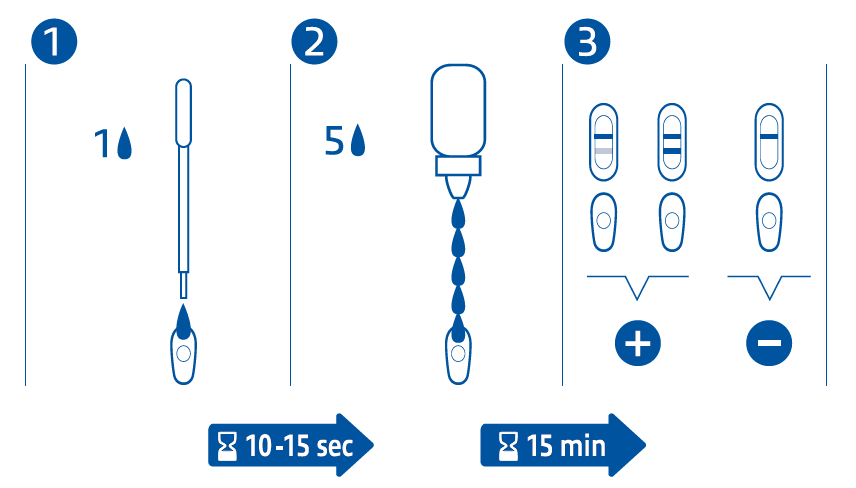Speed Diro
Rapid detection of circulating antigens of Dirofilaria immitis
| Presentation | Advantages | |
|---|---|---|
|
Method: Membrane Immunochromatography Analysis: Detection of circulating antigens of Dirofilaria immitis Preparation: 2 minutes Reading: 15 minutes Storage: 24 months at room temperature (2°C to 30°C) Presentation: 6 tests Reliability: Compared with the reference methods, modified Knott and laboratory ELISA: |
|
| Why to use Speed Diro ? |
|---|
|
In endemic areas, the infection may affect as much as 60% of the dog population. In Europe, the Mediterranean basin presents the higest prevalence (2), however many studies suggest an expansion of the disease in dogs towards central and northern Europe (4, 5, 6). The clinical signs, which appear several months after inoculation, are not specific (fatigue, coughing, anemia...). The detection of circulating antigens identifies even sub-clinical and occult dirofilariasis (absence of microfilariae ~20% of cases) (3). |
| When to use Speed Diro ? |
|---|
|
Speed Diro is particularly indicated in endemic areas for the regular screening of exposed animals. Speed Diro can be used to minimize the risks of contamination during blood transfusion. Speed Diro can be used to monitor the efficacy of adulticide treatment. |
Instructions for use
Bibliography
(1) VENCO L., Evaluation comparative à la technique de Knott et à l’Elisa de Laboratoire en Italie. Unpublished, 2002
(2) TROTZ-WILLIAMS L.A., TREES A.J.. Systematic review of the distribution of the major vector-borne parasitic infections in dogs and cats in Europe. Vet Record, 2003, 152, 97-105
(3) NELSON C.T. et coll. Guidelines for the diagnosis, prevention and management of heartworm (Dirofilaria immitis) infection in dogs. Vet Parasitology, 2005, 133, 255-266
(4) Morchon R., Carretón E., Miguel J., Mellado-Hernández I,. Heartworm disease (Dirofilaria immitis) and their vectors in Europe – new distribution trends. Frontiers in Physiology, 2012, Jun.3:196.
(5) Otranto D., Dantas-Torres F., Brianti E., Traversa D., Petric D., Genchi C., Capelli G. Vector-borne helminths of dogs and humans in Europe. Parasit Vectors 2013a, 6, 16.
(6) Genchi C., Mortarino M., Rinaldi L., Cringoli G., Traldi G., Genchi M., Changing climate and changing vector-borne distribution : The exampleof Dirofilaria in Europe. 2011 Vet Parasitol, 176(4):295-9
Websites
AMERICAN HEARTWORM SOCIETY
The American Heartworm Society encourages progress in the study, diagnosis, treatment and prevention of heartworm disease.
Website of AHS
Recommendations of AHS for Heartworm


 Dirofilariasis in dogs and cats is a vector-borne helminthiasis caused by adult filaria parasites that infest the cardiac chambers, lungs and associated vessels. The vectors are mosquitos (Culicidae) which aspirate the larval stages (microfilariae) from the blood and transmit the parasite to other dogs.
Dirofilariasis in dogs and cats is a vector-borne helminthiasis caused by adult filaria parasites that infest the cardiac chambers, lungs and associated vessels. The vectors are mosquitos (Culicidae) which aspirate the larval stages (microfilariae) from the blood and transmit the parasite to other dogs.